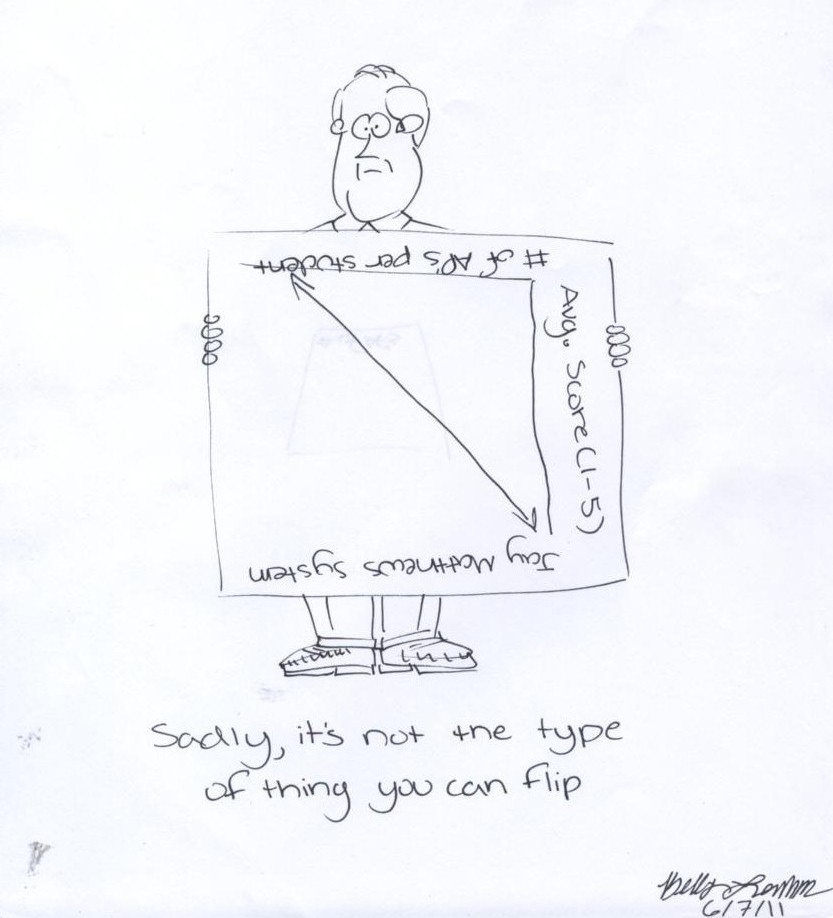The Washington Post released May 22 its annual “High School Challenge Index,” a list that ranks the nation’s public high schools. The Index ranks by dividing the number of AP, IB or Cambridge tests a school’s students take during a school year by its number of graduating seniors.

The Index yields misleading results and pressures schools to push unqualified students into AP classes. Education columnist Jay Mathews, the creator of the Index, should modify his ranking system to truly rank schools based on their overall quality by assessing their AP pass rates and other factors, instead of just AP participation rates.
The Index’s primary shortcoming is that it measures how many AP tests are taken, not how many AP tests are passed. This essentially rewards schools for failure because a failing score of 1 is just as influential as a high score of 5 for the Index. This mentality causes schools to push as many students as possible into AP classes, regardless of their qualifications, and takes the focus off of student achievement.
Mathews defends his system by citing evidence from the Department of Education that students who partake in simulated college learning like APs perform better in college, regardless of whether or not they pass the AP tests. But this data doesn’t necessarily prove a direct correlation between AP classes and college success. It just proves that the majority of students who take APs are smart and have enough self-initiative to succeed in college. Pushing students who aren’t ready to handle the coursework into AP classes doesn’t necessarily yield the same successful results.
Mathews argues that the Challenge Index shouldn’t take AP passing rates into account because schools keep the rates “artificially high” by only allowing top students to take the courses. But the alternative is schools pressuring students into APs before they’re ready, which raises schools’ rankings in the Index but harms the actual students.
Students gain more from succeeding in on-level and honors courses than they do from struggling in or failing APs, guidance counselor William Kapner said. Generally, only students who earn As and Bs benefit from taking APs, he said. However, poorly performing students who want to challenge themselves with an AP should be allowed to try one, so long as they make that decision on their own and not due to pressure from the administration.
Publishing a competitive listing of high schools in the Washington Post inevitably generates attention and controversy. Mathews makes it clear that his rankings only measure the number of AP and IB that schools provide, and he implies that this number is indicative of a school’s overall quality. Therefore, the information that Mathews’ Index provides is deceiving to people who may use the Index to evaluate the actual quality of their local high schools. For example, the Index ranks Washington Lee and Columbia Heights High Schools 6th and 7th, respectively, in the Washington region, but the two schools’ AP test pass rates are 46 percent and 25 percent, respectively. Comparatively, Whitman, with its AP pass rate of 88 percent earned a ranking nine spots behind Columbia Heights.
So long as the Challenge Index continues to masquerade as a qualitative high school ranking system, it will do more harm than good by validating the harmful practice of pushing unqualified students into APs. Mathews should change his index into one that truly measures school quality by considering AP test pass rates and other factors.













Jeremy Steinberg • Sep 23, 2011 at 12:28 pm
How about you rank schools based on factors unrelated to tests and perhaps actually related to students’ education?
Deborah Stein • Sep 15, 2011 at 10:48 am
The problem is not with Jay Matthew’s ranking system; its that the Post and others are using it wrong. He designed the system to rank schools, particularly those serving low-income and minority kids, based on how much they offer real challenge to kids, because evidence shows that if kids are exposed to this challenge they will do better in college whether or not they do well on the exam. Its only designed to measure how much challenge schools are offering all their students.
The Post’s failure is in suggesting that it can appropriately be used to assess all schools based on how well they are teaching. Whitman’s ranking should not be taken as a comment on the overall quality of Whitman’s education.
Nave Aenrec • Jun 8, 2011 at 5:24 pm
This is a great article and it is completely correct.